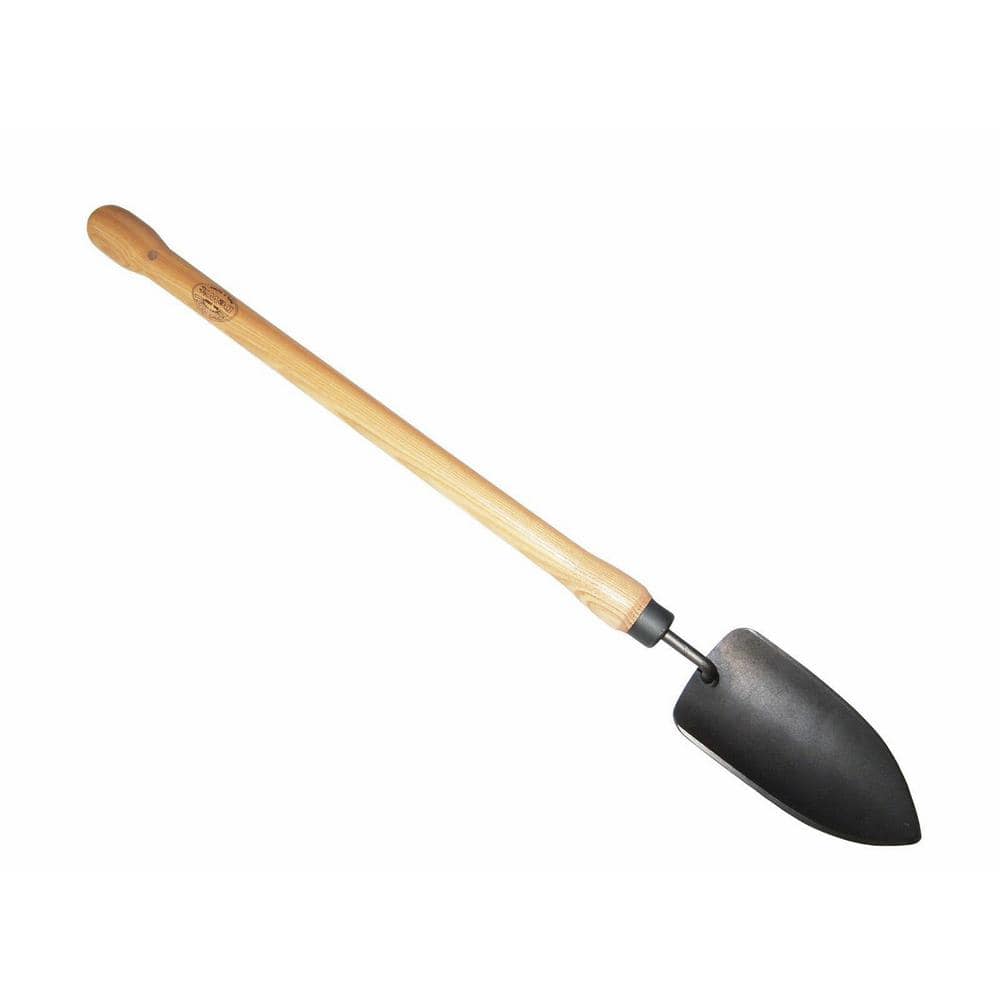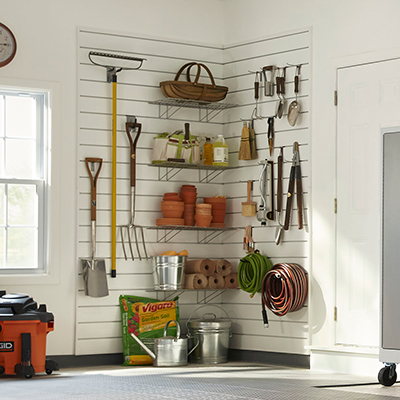Digging Tools Buying Guide

Last updated April 1, 2025
Digging tools are primarily designed to dig up and carry soil in gardens and lawns. There are several kinds of long-handled digging tools, from shovels to post hole diggers. Different digging tools also come in a variety of types. Choosing the right type of digging tool for the project you’re working on saves time and effort. Read on to learn about choosing the best digging tools for your project. Plus, get tips on choosing and taking care of quality tools.
Table of Contents
Shovels vs. Spades
Choosing the Right Shovel
Choosing the Right Spade
Post Hole Diggers & Digging Bars
Garden Forks and Rakes
Soil Tillers or Cultivators
Shovels vs. Spades

A shovel is usually wider and has a deeper bowl than a spade. Its primary purpose is to dig up and move large amounts of loose soil, mulch or other materials. Shovel blades are often larger than spade blades. A spade’s job is to dig holes and cut into compacted soil or roots. It usually has a flat, pointed blade and a shallow bowl that turns upward. Shovels are designed with long handles that angle forward for better leverage. Spades have a shorter, straighter handle for work in smaller areas.
There are four basic shapes of shovels or spades: round, square, pointed and scoop. Using the right shape with the correct tool will make any digging job much easier and less tiring.
Tip: Although there are technical differences between shovels and spades, these types of digging tools can go by either name depending on the brand. Keep in mind the use rather than the name of the tool when shopping.
Choosing the Right Shovel

A popular gardening tool for digging, common shovels include:
- Garden shovels have both a wider bowl, rounder shape and a curved blade. They work best in soft or tilled soils. Use them for yard or garden work such as planting beds, applying mulch or turning compost.
- Scoop shovels have a flat edge and deep bowl. They are ideal for digging into and carrying loose soil or light materials such as sand.
- Transfer shovels have curved edges and a square bowl. They work best digging into and carrying gravel, concrete or heavy materials.
- Tree planting shovels have long, triangle-shaped blades. Often serrated, they cut roots and make holes at the same time. This makes it easier to plant trees or other large plants.
- Metal detecting shovels are made for treasure hunting. Lightweight and portable, they have a wide bowl and a saw-like edge that digs into all types of roots or hard soil.
Tip: The larger the bowl or blade, the heavier the tool will be to lift and carry when full. Plan accordingly.
Choosing the Right Spade

Spades come in several varities and are a favorite type of digging tool.
- Garden spades are narrow, shallow with a curved or flat edge. They’re used for small areas such planting beds where precise digging matters.
- Trenching or drain spades have a long, narrow scoop, curved sides and a sharp edge. They’re designed to make it easier for you to dig deep into hard soil.
- Edging or planting spades or shovels have square, wide blades for cutting though sod and soil. Some planting shovels have a serrated edge to slice through thick, compacted roots. This makes them ideal for landscaping, creating clean borders or planting trees.
Post Hole Diggers & Digging Bars

Post hole and bar diggers are designed specifically for making deep, round holes. Which type of hole digger you choose will depend on the size of the hole and the condition of the soil.
- Post hole diggers have two handles with two shovel-like blades at the end. Digging with a post hole digger requires lifting and pushing the blades into the soil and then opening them to create a cylindrical hole. They are used for installing fences, poles and even planting bulbs in medium to hard soil.
- Digging bars are long, metal tools with a sharp point on one side and a tamper on the other. They work better than post hole diggers when it comes to very hard, compact or rocky soil. Common digging tools are bar diggers, pinch point bars and rocker bars.
Garden Forks and Rakes

Digging forks or garden forks are the best digging tools for breaking up rocky or hard soil. With their long, sharp-edged tines, these gardening tools are also good for aerating soil and digging up potatoes or other root vegetables. Ground rakes or garden rakes have several short, metal tines. They dig slightly into the dirt and are used for raking seedbeds, tearing up short-rooted grasses or smoothing out soil.
Soil Tillers or Cultivators

A soil tiller has a long handle and a group of sharp, metal blades at the end. It is used by pushing the blades into the soil and twisting. A soil tiller is used to dig into loose topsoil, and you can control how deeply you dig. They’re often used to easily mix in fertilizers and compost to planting beds and smaller areas. You can also use soil tillers to break up harder dirt so water and air can get through to plant roots.
Hoes

Hoes have long handles that make it easier to dig while standing straight. They are used to dig about 2 to 3 inches into the soil. Used for many garden and yard tasks, they can have short, curved or triangular blades. Hoes make short work of weeding, digging rows in planting beds, cultivating tight areas and plowing small gardens. They come in a variety of types, each designed for different kinds of digging.
- Draw hoes are used in an up-and-down chopping motion.
- Scuffle or stirrup hoes provide a back-and-forth motion for weeding.
- Collinear hoes are designed for precise digging such as cutting weeds from their roots.
- Wheel hoes are as they sound and are attached to a wheel and can be used to till a small garden.
- Fork hoes have tines to break up topsoil before sowing seeds or other planting.
Digging Tool Handles and Blades

Digging can be difficult, tiring work. It is also tough on digging tools. The construction of your handles and blades can determine how hard you work and how long your tools last.
Handles are long, short, bent or straight. For a big project, the best digging tools are those with longer handles. You’ll get better leverage and have less exertion. If you’re doing work that requires more control, such as planting, opt for a shorter handle.
- Wooden handles are budget-friendly, more comfortable, but not as durable as metal ones.
- Steel handles are very strong, durable, but may be uncomfortable to work with. Aluminum handles are lightweight.
- Fiberglass is both strong and comfortable.
- Plastic handles are lightweight, waterproof, budget-friendly, but not durable.
The hardest-working part of a digging tool is the blade. It’s important that the blade standup to pressure without breaking or bending. Some common blades are:
- Steel or stainless-steel blades are extremely durable and great for heavy-duty jobs. Stainless is easier to take care of than steel.
- Aluminum blades are sturdy and lightweight. They are fine for moving soil but not for digging into hard or rocky dirt.
- Plastic blades are budget-friendly and work for light digging projects, but can break easily.
Make all your garden or yard projects easier by picking the best digging tools. There are a wide variety of digging tools, from garden shovels to soil tillers. Based on your soil and what you’re trying to do, choose the correct type of handle and blade. Ready to get a spade, hoe or other digging tool? Use the Home Depot Mobile App to locate products and check inventory. We’ll take you to the exact aisle and bay.

































